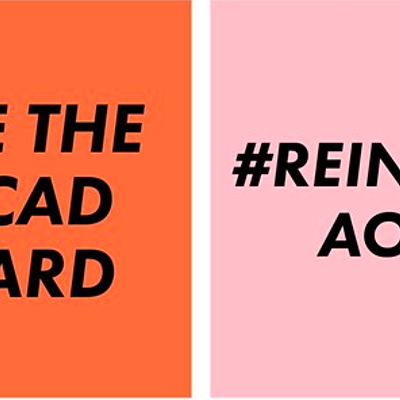Q. What is your vision for Barrington Street?
A. Well, it’s not a vision, really. It’s a belief that the current trend will continue. The current trend is that the retailers of the past will continue to exit. We would hope that they stay, but I think that the downtown, as in most major cities, is undergoing a huge change.
What you see in other cities is more people moving and living downtown. I believe that will happen in Halifax. The reason it hasn’t happened so far is there’s nowhere for them to live. The new planning strategy, the new MPS [Municipal Planning Strategy], calls for residential downtown. The planners had anticipated that happening, you had the Twisted Sisters approved, I think there was one or two around the Keith’s Brewery approved. You had two or three buildings approved for people to start moving downtown, and they probably would have had they been built. You keep on blaming planners and you keep on blaming the city, but it’s really developers are to blame. They’ve knocked down buildings and proposed developments and not gone on to do them. Without people you don’t have the wherewithal to have the new types of businesses, back to the vision. I envision people coming downtown.
Today’s entertainment is going out for dinner, looking at books, looking at magazines, travel agencies, more service types businesses and mercantile, retail type stores. If you’re going to have retail, they’re the type of stores that people want to spend time in. More for home furnishings, maybe lifestyle type store, maybe even car dealerships, Vespa dealerships, bicycle shops, sporting shops, those kinds of things. Shoe stores, clothing stores, I don’t believe…listen, I would love for those stores to come down to Barrington Street, I’d be the first to want to rent them space. I just don’t believe that’s in the cards. If you go shopping for retail items, if you want a pair of shoes, you want to go to a place where they have four or five shoe stores. You’re not going to get that on Barrington Street anymore, the rents are too high.And that’s another thing, you have stores that are leaving, because their business model doesn’t work on Barrington Street anymore, like a Carsand Mosher. It’s clear. So they leave and they demand a high, high price for their building, as they should... but they leave a store that’s a mess. It’s got a leaky roof, it’s got windows with seals that are broken, they are terrible buildings. The city has gone forward with grants and tax incentives to do this, and yet it’s hundreds of thousands of dollars to fix those stores, plus the cost of the building itself. So you can’t then go ahead and renovate the building and rent it to a store that’s going to sell greeting cards. They’re just not going to make enough money to pay that rent. So, you’re going to have to have more creative-type stores that are able to make a living and pay the rent and attract other people to Barrington Street. A perfect example is Freak Lunchbox: It’s doing well with tourists and the people who work downtown, it’s a destination. People will come down and bring the kids. And then they tried to do the Peepshow Girly Boutique. They’re imaginative, creative entrepreneurs, but they found it difficult to make a go of it. I think they had a good go, I think they were doing rather well, maybe not up to their expectations. But they did do business there. I think the problem is you need other retailers to come downtown to buy a pair of jeans and then go somewhere else to buy a hair band, or who knows what else.
So, I think there’s not a vision so much as a hope that businesses will come downtown. You have offices downtown, there are places that are needed for those working people to use. And when you have residential so you have the same amount of people down there during the day as you do at night, then businesses can survive. Businesses don’t survive on 9-5 anymore. And transportation is great on Barrington Street. If the convention centre comes along, hopefully, you’ve got the Citadel up above and the water down below, [Barrington Street is] centre ice, right? There’s no question it will continue. Is it having a bump in the road? Most certainly. Not because of people like me, not because of individual store owners, it’s just a change. It’s sort of in a midlife crisis, but not of its own accord. It needs a residential base to move forward in this era. Otherwise, the price of gas, the lack of parking, which isn’t special to Halifax, you want people living in Halifax who can walk and ride their bicycles to these stores, which will come once you have people who will shop in them. But you can’t have stores come and hope that people will just show up at their doorstep.
In the meantime there are a lot of people who would like to work downtown. There are a lot of stores that will survive in the present state with the amount of foot traffic on Barrington Street. The cultural side of things, the arts are downtown, the museums are downtown, NSCAD, the waterfront. It’s not like nothing is happening.
It’s not only the residential developers who haven’t put their best foot forward. You’ve got little shopkeepers who are doing their best to keep their store tidy and whatever, but there are some who haven’t done anything to their business in a long, long time. Sitting on their property, which is their right, they run their businesses and watch their real estate appreciate, but they’re not really changing their businesses. There’s a lot of things that in a perfect world could happen quicker. You’ve got the library that’s going to be built in the next few years on Spring Garden. The cultural hub is and always will be downtown. People will come. The problem is we don’t want to rely on tourists, we want people living downtown. By we, I mean everybody: the planners that plan for it, the city needs it.
The city, for all its good intentions, they have landscape and street furniture plans for Barrington, which should have been done. Make the streetscape a little more presentable, maybe some green and benches. There are other things that can be done and are in the cards. Unfortunately they have priorities for the money… they take from the downtown but don’t want to put back. All the tax that comes out of the downtown is enormous, and what is it they put back, a few dollars in grants? Their grant money is really our grant money. We do a renovation and the next thing that happens our taxes go up tremendously, and they get even more taxes than what they give us in grants. That’s a vicious circle for downtown developers and entrepreneurs.
Q. What are your plans for the Roy building? You submitted reconstruction plans for the building that could go either commercial office space or residential, but lately we’ve heard that you’ve decided on a residential building. Also, we’ve had conflicting reports about the present tenants in the building---some say they’re being evicted, but others, new renters, tell us they’ve been promised a year in the Roy building.
A. I wouldn’t say anybody’s been guaranteed to be there a year. I don’t do the rentals, but I doubt very much. I won’t say factually, but I certainly hope it won’t be a year. It will be an office building. We’ll leave the residential on Barrington to Medjuck [editor’s note: Frank Medjuck has applied to rebuild the old Eaton’s department store (present day Discovery Centre) building as a 20-storey apartment building.]
You’ve got to realize, the new plan calls for a maximum height of six storeys. Which won’t allow for a lot of the buildings to be redeveloped to six storeys given the very nature of the buildings. You can look at the one being planned for the NFB space. Even if they do the planned development and even if it works out the way they’re proposing it, that entails Barrington Street and some space over on top of Argyle buildings. I think that calls for 40 or 50 units. That’s a huge piece for Barrington Street. There is nothing where you can get big buildings on Barrington Street. To do a little apartment with four or five suites in it, that’s fine, but that’s not what we’re talking about. We’re talking about condo buildings, 200-suiters. Like the Keith’s property or the Twisted Sisters. That’s what you need. You need affordable downtown development, not a few apartments here and there on top of a storefront. That’s good but it isn’t going to solve the need. You need good density to support park infrastructure, maybe a couple schools, NSCAD, which would gobble up 100 or 200 lower cost units. Louis Lawen [developer of the Trillium building on Spring Garden Road] doing buildings as far as I understand… he rents them up as soon as they’re built. The desire is there and the need for big residential.
The Roy could be a good spot for residential, the problem being it’s just too expensive. I don’t think the numbers work for residential. The market is there. I would love to do a residential building, if the means were there, if an affordable piece of land was there. And I could do it. I’m not a residential guy, anyway. I’ve done it; it’s just not something I’m into. We like building, owning and managing our properties. With residential, you sell them and you’re done. I’m not a cookie-cutter type of guy. We’re busy with what we’re doing. You’ve got a bunch of good residential developers in town. Hopefully those opportunities will come up. Not to say if a good deal came up I wouldn’t do it!
We have a great plan with The Roy. That building will fit into the conservation district that’s now been legislated into the HRM. We have a great plan looking forward to the office building. Yes, it’s taller that what the new plans call for and that’s why it was grandfathered into the old municipal planning strategy. If it were to be passed we would build it right away. Just think of another 100,000 square feet of office space, bringing more people standing at bus stops during the day. At night, what would go into the base of that tower, there are six floors. It will be a structure that to all appearances would be like The Roy. We’re planning health clubs in there. All these workers downtown, don’t you think they want a gym to go to at night? Or a good yoga place with showers and proper facilities? Places where you can lounge and dine or just dessert, read something or hang around, like an Indigo Books. The gym won’t come without a bookstore, the bookstore won’t come without a coffee shop, but if I have that social structure, which we have called for with some venue space, maybe some galleries in it. There’s your cultural heritage in so far as usage is concerned. Heritage isn’t just a vision of an old building sitting there, heritage is cultural also. How about people just wanting to come stay on Barrington Street? The guy who leaves work at 5 o’clock, is he in a rush to get home? He might stick around for a couple hours if he’s got a place to go. It’s an important and integral part to the puzzle. Just because it’s not going to be residential and just because it’s not going to be an old, broken-down building doesn’t mean it doesn’t fit onto the street. There’s some real historic merit to having certain usages on that street that can’t be there because you don’t have the space for it. The old buildings can’t accommodate the types of buildings that people need today to do the things people need on Barrington and downtown.
Q. What about the Sam the Record Man and Ginger’s Tavern buildings?
A. We have lots of interest. Going back to the Roy, we have great hope that a lot of our tenants will stay with us. We haven’t closed yet [on the Carsand Mosher Building], we’ve contracted to buy it, which has 5,000 square feet of office space there. Sam’s is going to have another 15,000 square feet of office space. First dibs will go to our existing tenants. With Sam’s we are quite confident that as the space is finished it will be filled.
Q. Will tenants’ rent go up?
A. We’ll work it out. Renovations are a moving target. It’s quite, quite expensive. The expected increase for the most part would be common area costs, the cost of maintaining the space, taxes, but having said that, costs that we’re eating on a building like The Roy. You can eat off the floors, the building is immaculate. Outside, the brick is balding, the windows aren’t being replaced. There aren’t two windows that look the same. And it’s not what we’ve done, we bought it in anticipation of renovating it or having to do something major to it. As it turns out, it was too major to do anything, which is why we went for redevelopment. But if you’re looking at paying more, we try and keep within a range. The market can only bear so much. We’re not going to be attracting the Stewart McKelvey law firms into our buildings. So the partnerships we create with our tenants, we know the kinds of rent they can afford and we try to build to accommodate for them. Well try to keep them in line.
Q. What about your other downtown properties?
A. The Morris Tea Building---it’s a heritage building. We’ve been working on it for a year. It’ll be ready this fall. We do have tenants for it. We’ve done 14 projects, unbeknownst to a lot of people. We finished one on Gottingen last year. We just keep motoring along. I think our tenants, for the most part, are happy. We carry a lot on our shoulders for a lot of things that other people are doing. I think we’re doing a really good job, and we’re trying our best, that’s for sure. We encourage everyone to take pride in the street. If we have an opportunity come up and it works, that’s our business. Our business is owning and managing real estate. To do that you have to have tenants, and those tenants we consider our partners. And we’ve got a tremendous bunch of tenants. I can almost call them friends. I can almost walk into buildings and know most of them. And I’m not there, so my staff of course knows them all. And it’s great. We’ve built up a great relationship. I love the creativity, there’s a great undercurrent in Halifax. In the 10 years I’ve been there, more of the college grads are staying. You can definitely feel the youth, and that vibe. I just enjoy it. It’s got a great cultural slant to it, and a warmth. A small town feel, big town assets.














